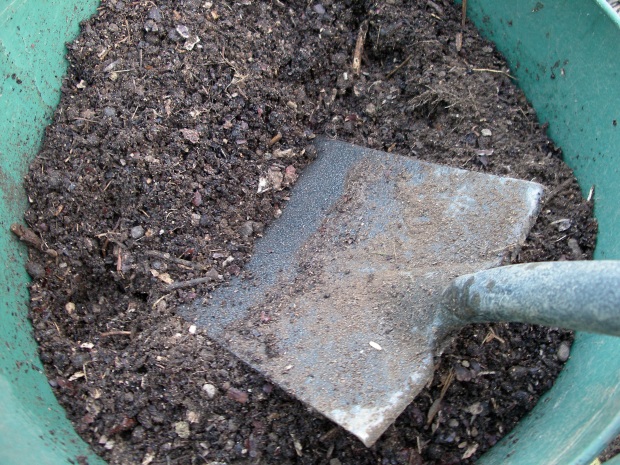Posts Tagged Growing
Planting Tomatoes
Posted by Laura Hudson in A-Z Edibles, Cultivation, Manual, Seasonal tasks, Soil Fertility, Solanum, Tomatoes on May 15, 2012
Tomatoes are one of my favourite foods so I grow as many as I can fit in my garden and choose varieties for their flavour, use and season and I make sure of a good crop by really taking care of them. As with most plants if you give them a good start and the best growing conditions you will be rewarded with better crops and stronger plants that need less care in the long run.
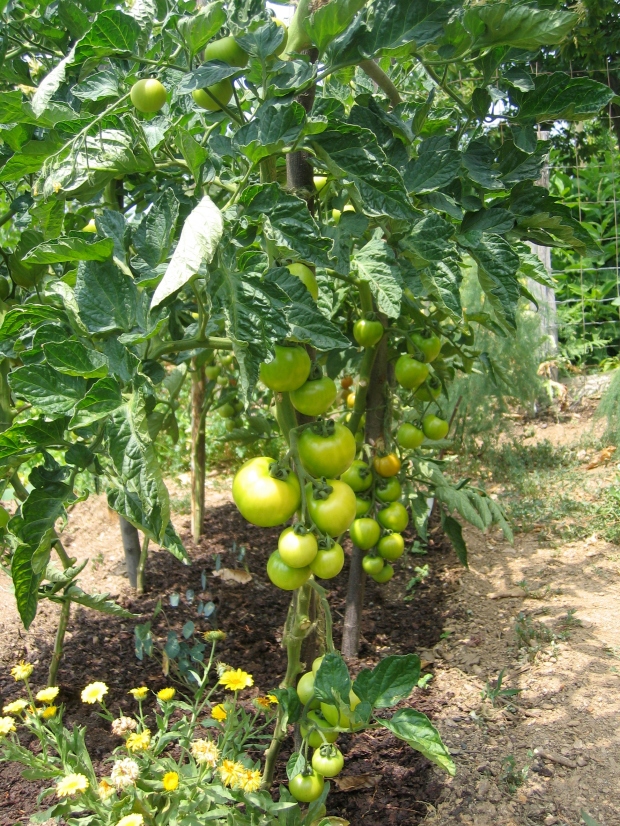
Choosing Tomato varieties
My favourite eating tomato is still Noir de Crimee, a black Russian heirloom; odd shape, odd colour but fantastic taste. Cherry tomatoes are a must for me as they are great to graze on while pottering around the garden. Next I make sure I have plenty of tomatoes for preserving, some varieties being better than others, the best I’ve tried so far are San Marzano and Roma for paste and sauces see the page on best preserving tomatoes. The other thing to consider is the length of the season. Some tomatoes bear fruit more quickly than others and are normally described by the number of days from planting out to first fruit ripening i.e. Early 55-70 days, Mid-Season 70-85 days and Late beyond 85 days. Next is variety of flavour and colour which makes for wonderful mixed tomato salads so it is nice to grow a few mild white tomatoes, acidic green ones and puunchy orange ones.
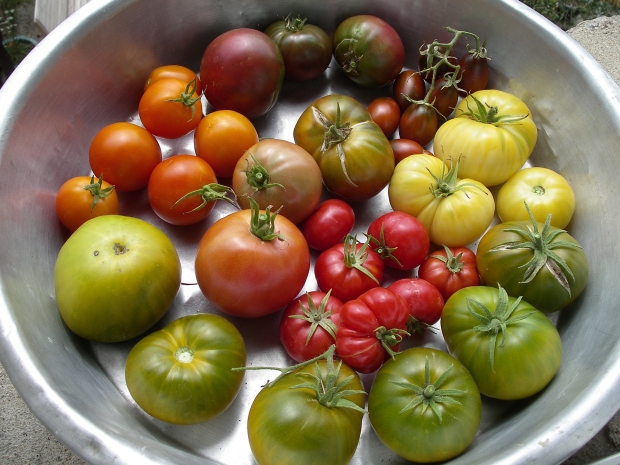
The first thing about tomatoes is that they need plenty of nutrients to produce all those lovely fruits, but the nutrients need to be added as they grow, if you put too much in at the beginning they are more likely to have too much leaf growth at the expense of fruit.
Soil Preparation
Tomatoes need a constant medium level of moisture. Too dry, too wet or too much fluctuation often causes blossom end rot resulting in unusable tom
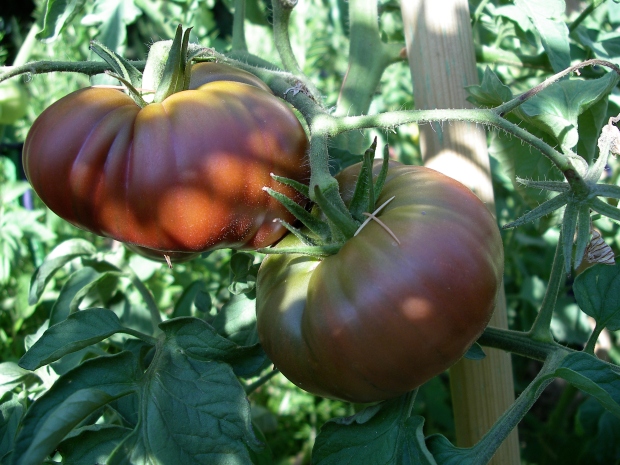
atoes. Prepare the soil where the tomatoes are to be grown either by preparing planting holes, troughs or the entire bed. I prefer to prepare troughs as this helps to direct the most nutrients and moisture to the roots and it makes it easier to water when needed. Dig a long ditch 2 spades deep and 1 spade wide. Put a layer of chopped comfrey leaves on the bottom and half fill with a mixture of well rotten compost and manure 9 parts compost to one part manure and water heavily to fill the trough.

Planting depth
Plant the tomatoes in the bottom of the trough, as deep as you can, right up to the first set of true leaves, remove the remaining baby leaves. Roots will grow from th
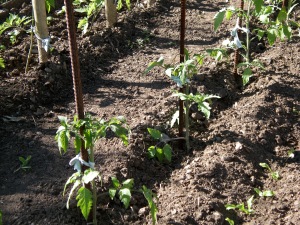
e stalks giving the plant more stability and ability to draw more moisture and nutrients from the soil cover with dry soil but leave sides to the trough. This will help protect the young plants from wind and help direct water to the plants.
Spacing and Staking
Tomatoes need a fare bit of space as they don’t like to be crowded. It depends on how you plan to grow the tomatoes as to what distance apart they should by anything from 40-75cm apart works. I normally set out at around 50cm apart and grow them as cordons, that is straight up a pole with one main stem or sometimes two depending on how vigorous the variety. Cordon tomatoes need to be staked, I use 2 meter metal, chestnut, or cane poles with a cross brace on windy sites. Tie in the plants as they grow so that the tops are firmly but gently attached to the poles.
Top Dressing
Once the tomatoes are in place add a top dressing of organic soil enhancer such as seaweed meal or well rotted manure. The dressing will gradually be brought down into the soil by water and the soluble nutrients can then be drawn up by the plant as it grows.
Mulch
Applying a mulch, a top cover, over the ground around the tomatoes will help protect the soil and plants and conserve the moisture level in the soil. For more details on mulching read Using Mulches
Pinching out
Intermediate tomatoes have a habit of growing into bushes which produce a lot of leaf and plant growth but less fruit. In order to concentrate the plants energy on the fruit it helps to pinch out the side shoots. That is the little sprouts that form between the main stems and a leaf branch. Pinch these out with your fingers when they are less than 12cm. If you have missed a few and they have got bigger cut them off with clippers or a knife so as not to tear the plant.
Liquid Feed
Tomatoes benefit from a liquid feed, applied every 2 weeks, once the fruit start to form. You can buy ready made preparations but why not make you own. For more details on liquid feeds read Making Organic Liquid Fertilisers
Gardener’s Tip
Russian Comfrey is one of the most versatile plants for the organic kitchen gardener as it is a fantastic natural source of potash-rich organic material and liquid feed. It’s many uses include; compost activator, liquid feed, potting mix, soil enhancer, mulch and bee attractant.
The real value of comfrey lies in its composition. The roots bring up potassium, phosphate and other minerals from deep in the ground to the leaves which are also high in nitrogen. Comfrey has 2-3 times more potassium than animal manure, which makes it especially good for the production of flowers, fruits and seeds.
Beware Russian Comfrey (Symphytum x uplandicum) is quite a different plant from Wild Comfrey. (Symphytum asperum). Russian Comfrey is a hybrid and is sterile so does not freely seed. Wild Comfrey seeds madly and can be a real nuisance, we had some growing in our garden in England and I could not get rid of it.
